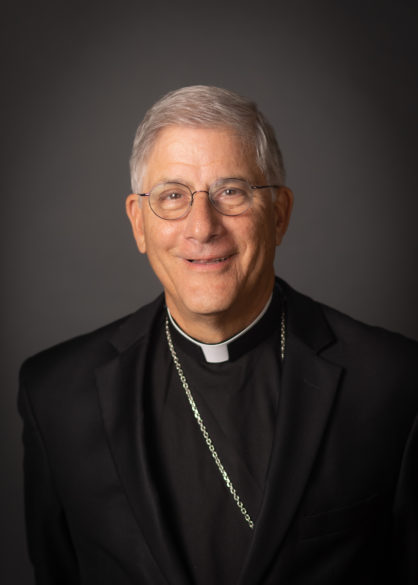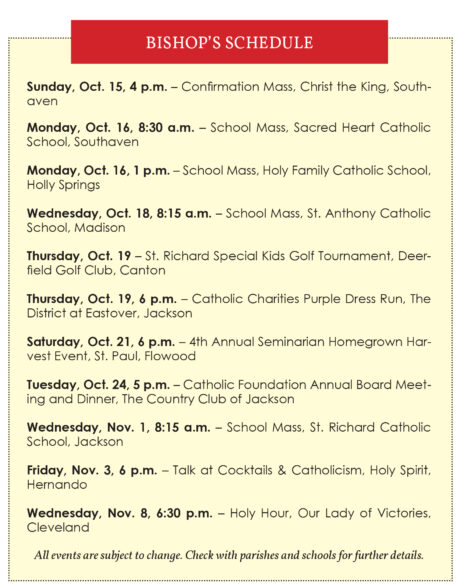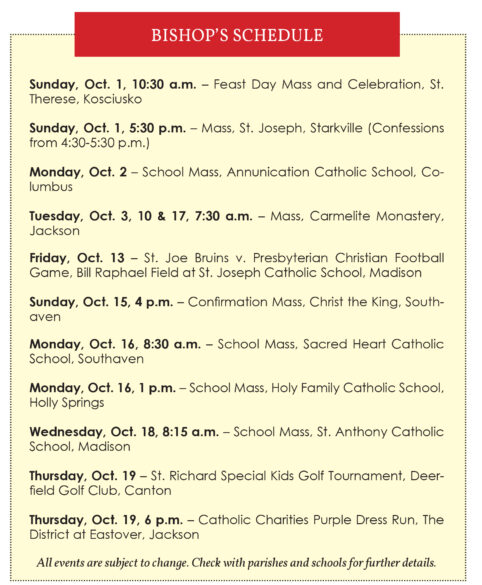
By Bishop Joseph R. Kopacz, D.D.
The Feast of All Saints is the portal at the beginning of November that invites all of the living members of the church to transcend time to see the Cloud of Witnesses that surround the throne of the Lamb in Heaven. The lives of the holy ones reveal God’s ultimate plan for us in eternity, and a well-defined pathway for this life to reach the goal.
In the book of Revelation, the heavenly vision is comprised of a “vast crowd, too great to count, from every nation and tribe and people and language, standing in front of the throne and before the Lamb. They were clothed in white robes and held palm branches in their hands.” (7:9) What a great gift of hope the apostle John has given to the church for every generation until the Lord comes again.
In manifold ways the Lord Jesus molded all of the saints in their uniqueness into his image and likeness. Among this number, too great to count, are the six African American causes for canonization. They are remarkable women and men whom God called out of the darkness of slavery and unforgiving segregation into the light of sanctity and dignity. They are Mother Mary Lange, Father Augustus Tolton, Mother Henriette DeLille, Pierre Toussaint, Julia Greeley, and, of course, our own Servant of God, Sister Thea Bowman. They are outstanding witnesses of faithful discipleship for the universal church and even more so throughout November which is dedicated to Black Catholic History.
We know that the church was insnared in the evils of slavery and its aftermath, and for this we are called to repentance and the light of a new day. This month we also want to celebrate the church as a loving mother who nurtured the seeds of faith, hope and love through loving service and education within many African American settings.
St. Paul’s words to the Thessalonians is the paradigm for the church as the beating heart of Christ. “Brothers and sisters: We were gentle among you, as a nursing mother cares for her children. With such affection for you, we were determined to share with you not only the gospel of God, but our very selves as well, so dearly beloved had you become to us. You recall, brothers and sisters, our toil and drudgery. Working night and day in order not to burden any of you, we proclaimed to you the gospel of God.” (1Thessalonians 2:7-9 and 13)
This was Sister Thea’s experience when the religious brothers, sisters and priests shared their lives in the manner that St. Paul describes. “I was drawn to examine and accept the Catholic faith because of the day to day lived witness of Catholic Christians who first loved me, then shared with me their story, their values, their beliefs; who first loved me, then invited me to share with them in community, prayer and mission. As a child I did not recognize evangelization at work in my life. I did recognize love, service, community, prayer and faith.”
Last weekend on Saturday at the outset of Black Catholic History month, I participated in a parade, walkabout and program in Jonestown, Mississippi in honor of the late Sister Kay Burton, SNJM, a sister of the Names of Jesus and Mary. This religious community was founded by Eulalie Durocher in 1843 in Quebec, Canada. Sister Kay had overseen the development of various Jonestown community services and programs during her thirty years of ministry. The gift is that they continue through local leadership among this generation of Christian collaborators.
On Sunday I participated in the Women’s Day Program sponsored by the Holy Ghost Ladies Auxiliary. Our diocese was fully immersed in the quest for justice and peace in the late Jim Crow years and Civil Rights era, a reality that was gratefully acknowledged during the program. All of this is to say that along with the six Black Catholic women and men on the path of canonization, there are countless other Black Catholics here in our diocese and throughout our nation who are now witnessing, serving, teaching, and evangelizing because the gift they once received continues to flourish.
The participants at the Synod that recently concluded in Rome at the end of October had representation from nearly every county in the world, or as we proclaim, from every nation and tribe, people and language. For them and for all of us may the Holy Spirit deepen our commitment to unity, participation and mission. With St. Paul and Sister Thea, may the beating heart of Christ direct our steps in this life and enflame our vision for the promise of eternal life.








